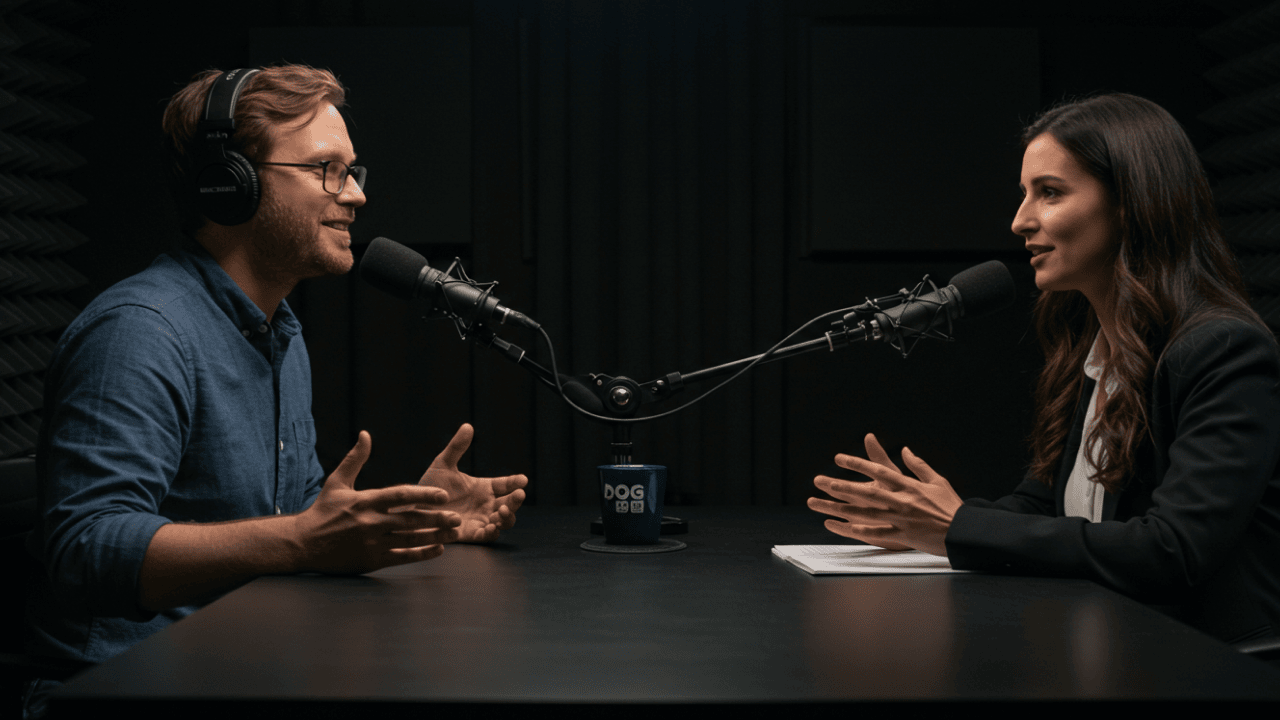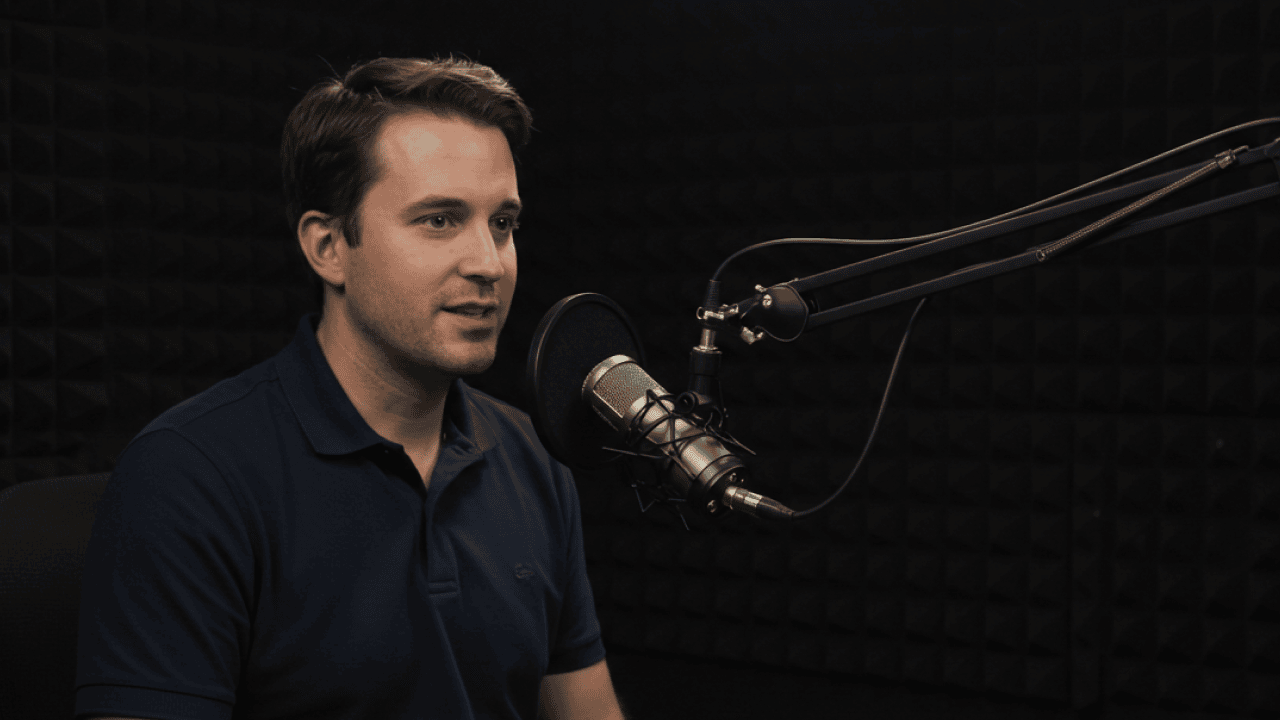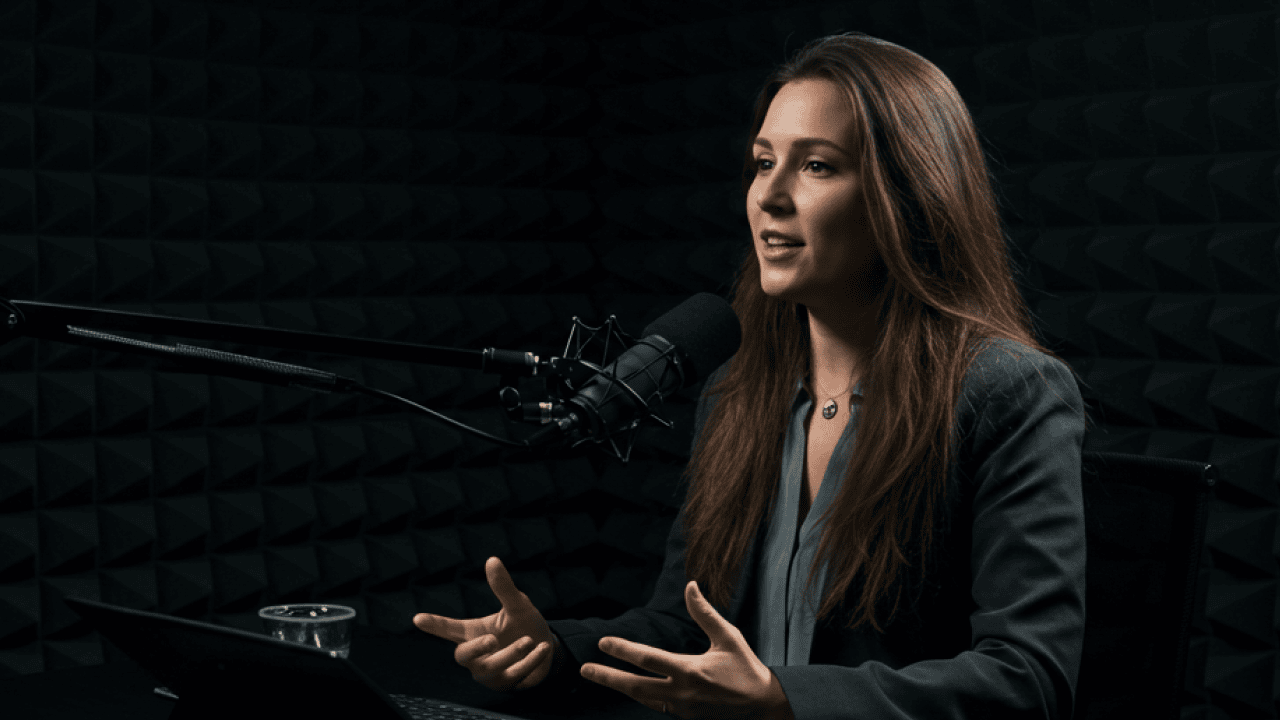
Display advertising doesn’t have to be a black hole of impressions and wasted budget. In this episode of Pipeline Playbooks, we walk through a smarter, more efficient way to use display ads—by focusing them entirely on your Ideal Customer Profile (ICP). Forget broad, generic targeting. This playbook is all about using tools like Dealfront Target, Promote, and Leadfeeder to ensure your ads reach the companies—and even the job titles—that matter most.
We explore how to identify and segment your ICP, serve ads directly to those accounts, and then track which companies are actually showing interest. Most importantly, we show you how to turn that interest into pipeline using personalized, timely outreach based on real behavior—not assumptions. Whether you're in demand gen, sales, or ABM, this episode will help you run ads that don’t just look good on a dashboard—they drive results.
Expect to Learn:
- How to define and filter for your ICP
- Ways to serve display ads only to target companies
- How to track engagement and buying signals post-click
- What UTM tags are and why they matter
- How to personalize outreach based on ad interaction
- A 5-step email sequence to turn clicks into conversations
- What kind of ROI to expect from this hyper-targeted strategy
Ready to level up your sales and marketing strategies? Subscribe now and start transforming your approach to revenue!
Looking to put these strategies into action? Dealfront’s Marketing and Sales solutions are built to help you do just that. Whether you’re aiming to boost lead quality, improve conversion rates, or engage high-intent buyers at the right moment—our platform gives your team the data, tools, and insights to make it happen. Explore how Dealfront can support your next campaign or sales sprint.
Connect with us: LinkedIn: https://www.linkedin.com/company/dealfront/ Facebook: https://www.facebook.com/getdealfront/ Instagram: https://www.instagram.com/getdealfront/ TikTok: https://www.tiktok.com/@dealfront X: https://x.com/getdealfront YouTube: https://www.youtube.com/@dealfront
![Alicia Morgan]()
Alicia Morgan
at Dealfront
![Ethan Cole]()
Ethan Cole
at Dealfront
00:00 Welcome back everyone to the Pipeline Playbook series. Let's talk display ads today. You know that feeling, right? You're putting money in, you see the impressions maybe, some clicks, but like the actual qualified leads, the needle just isn't moving. Feels like your ad spend is just, I don't know, wandering lost in the desert somewhere. That is such a common frustration, that feeling of, you know, pouring resources into a black box almost. That's definitely a pain point we hear about constantly.
00:29 well, for too long, display advertising was a bit like shouting into a massive crowded room and just sort of hoping the right person might maybe hear you. Exactly. But what if that whole scatter gun thing was basically history? What if you could actually focus your display ads with laser precision on the exact companies, maybe even the specific people who fit your ideal customer profile? No, that's the goal, isn't it? Well, today, that's what we're diving deep into, a strategy that promises exactly that.
00:58 Yeah, we're looking at a blueprint here that really moves beyond just getting ads seen. It's all about making sure they're seen by the right eyes, the ones most likely to actually turn into valuable pipeline. OK. And this involves a pretty smart combination of targeted display ads, understanding intent, like when those targets actually show interest, and then crucially reaching out in a way that really connects. And this blueprint, where is it coming from? We're unpacking the target ICPs with display ads.
01:28 Playbook, it's from Dealfront. Dealfront, yeah. They've laid out this really practical step-by-step guide using their tools, Target, Promote, and Leadfeeder. It seems designed specifically to help marketing and sales teams work smarter, not just harder. Makes sense. So let's start with that big shift. What was the old problem? Why were display ads traditionally so, well, hit or miss? Well, the main challenge, and the Playbook points this out clearly, was just how broad the targeting used to be.
01:56 traditional display relied heavily on like really general user behavior, demographics, that sort of thing. Think about it. You might target people interested in say marketing technology, but that's a huge bucket, right? Huge, yeah. And loads of those people will have zero actual need for your specific B2B marketing tool. Okay, yeah. So you'd just be showing ads to, I don't know, students doing research, maybe competitors checking you out, hobbyists.
02:25 Basically anyone but a real potential buyer. Exactly right. So instead of connecting with those specific companies, and more importantly, the key decision makers within those companies who could actually become customers. Well, your message just got diluted, spread thin across this massive, often totally irrelevant audience. Which leads right back to that wasted ad spend you mentioned. Clicks and impressions that ultimately go nowhere. Precisely. The ads just weren't hitting the people who actually held the purse strings or the decision-making power.
02:55 within your ideal customer profile, your ICP. OK, so that was the old way. Kind of a spray and pray approach, hoping something would stick. What's changed? What technology lets us do this more targeted thing now? The real game changer, honestly, has been our ability to identify and then actually reach specific companies online. It's huge. How so? Well, now, thanks to big advancements in data processing, account-based marketing tech, advertising platforms,
03:22 We have tools that let businesses focus their display ad firepower directly onto their defined ICP. Those companies that perfectly match who you want to sell to. And like you said earlier, it often goes even further letting you target specific job roles or levels of seniority within those target organizations. So it's really flipped from like hoping the right people stumble across your ad to actively putting your message right in front of them where they're already online. Exactly. And that level of precision
03:50 which platforms like Dealfront's Target enable. That's the key to slashing that wasted ad spend we talked about. By focusing only on your ICP, well, you maximize the impact of literally every impression, every click. You make sure your marketing cash is building real connections with prospects who have the highest chance of becoming actual paying customers. All right, let's get practical. Let's dig into how this actually works. Step one in this playbook is finding those ICP companies. How does Dealfront Target help with that first
04:19 crucial step. DealFront Target is really built for this. Assuming you've done the work to define your ideal customer profile. Yeah. And they do mention having separate resources on nailing that definition, which is important. Good point. Target lets you basically filter through this huge database of B2B company information using loads of different criteria. OK. So you can build this really specific, focused list of companies that perfectly match your ICP characteristics. It ensures your whole campaign starts off
04:49 focused on the right prospects. OK, so what kind of filters are we talking about? What levers can you actually pull in Target to narrow things down? Well, you've got the basics, obviously. Industry codes, company size, maybe by employee count or annual revenue, and of course, geography. Location. tune-in stuff. Standard stuff, yeah. But Target goes quite a bit deeper. One really powerful feature they mention is contact filters. Ooh, contact filters. What's that? It lets you narrow your search for companies based on the specific job titles or even the seniority level.
05:18 of the decision makers within those companies. Okay, hang on. That's huge. So you're not just finding the right company. You can filter based on whether they have the right people inside, like VPs of marketing or directors of IT. Exactly. It gets you much closer to the individuals you actually need to influence. Yeah. And for even more, like really granular targeting, you can filter companies based on keywords found on their websites. Really? How does that work?
05:44 So you could input keywords related to specific technologies they might be using, or maybe solutions they seem to be looking for based on their site content. That helps you pinpoint businesses that are probably an exceptionally good fit. Wow. Like you said, defining the ICP is its own whole process. But once you have that clarity, Target gives you the tools to generate that super focused list. And you just save that list for the next step. The trick isn't just picking filters, though.
06:10 It's understanding which combination of factors best predicts a good customer for you. Look for patterns from your past successes. Fantastic. Okay, so Target helps build the who. You've got your curated list of ideal companies. Now, step two. How do you actually serve the display ads to them? That's where Dealfront Promote comes in, isn't it? That's the next piece of the puzzle, yeah. Yeah. Promote is the engine that takes that carefully built list of ICP companies and deploys your display ad campaigns directly to them. Okay.
06:40 The playbook is clear. You need two things ready before you start and promote. One, that target account list you just built. Two, your ad creatives. And they need to be compelling, relevant. They need to speak directly to the specific audience. Right, because you're not doing generic ads anymore. If you're targeting, say, fintech CFOs, your ad needs to talk their language, address their specific pain points. Wow, 100%. Generic.
07:03 one size fits all stuff, just won't cut it here. You need messaging that resonates with their challenges, their goals. It makes sense. And Promote basically uses ad networks to get your ads onto the screens of people working at the companies on your list using things like IP addresses and other digital signals associated with those businesses. And Dealfront provides some guidance on creating those effective ICP-focused ads. They do, yeah. They talk about really understanding the audience using benefit-driven headlines, strong visuals.
07:32 Clearly stating your value prop, not just listing features. Yeah, benefits over features, classic. Exactly. And having a clear call to action, maybe even using social proof if you can. Oh, and practically, they recommend having your ads in various standard banner sizes to maximize where they can show up. Good tip. OK, so list is ready, compelling ads are ready. How do you actually set up the campaign in Promote? Walk us through it. Sure. The process seems pretty straightforward. You hit the Flizz plus Create Campaign button.
08:02 Then it asks for your audience. You just select that list you saved or uploaded from Target. Then you choose your geography. Are you targeting globally? Specific regions, just certain countries. You define that scope. Next is uploading the actual ad images. And this is key. You have to pair each ad creative with a specific Target URL. That's the landing page on your website you want people to go to when they click that ad.
08:27 So every single banner needs its own destination link. Yep, the playbook stresses that. Each ad needs a target URL for the campaign to even work correctly. And I guess this is where tracking comes in, making sure you know if the ads are actually driving traffic. Absolutely crucial. And Dealfront strongly recommends using UTM parameters for this. They want you to track and analyze how effective your campaigns are. OK, UTMs, important stuff.
08:53 does Promote help with that? Because building those URLs can be a bit fiddly sometimes. does, actually. They've built in a UTM builder. As soon as you paste in your target URL for an ad, this little builder pops up. Nice. It automatically generates the URL with the right UTM codes added, which makes it way easier to track where your traffic is coming from. They even have an option to use a dynamic ad name for one of the parameters, the um-content one, for really granular tracking.
09:20 Okay, cool. So UTMs are basically like little tags you add to the end of your link. Exactly. Like digital breadcrumbs. And for anyone listening who might not be super familiar, what do those breadcrumbs, those UTM parameters actually tell you? Sure. So UTM parameters are just short bits of text added to a URL. Yeah. They let you track key things about your campaigns. Like, Upsource tells you where the traffic came from in this case. You'd probably use something like Dealfront Promote. Okay. Then Medium tells you the marketing channel, like Display or...
09:50 maybe CPC, if it's pay-per-click, a.m. campaign lets you name your specific campaign, maybe Three Jimmered or whatever. Got it. And you can also use a.m. content to differentiate between different ads within the same campaign. Maybe Blue Banner of one versus Red Banner of two. This level of detail is, well, invaluable for figuring out which ads, which messages, which channels are actually driving results. Totally makes sense. So promote makes adding those essential UPMs easy.
10:16 What are the final steps then to get this targeted campaign live? Right, so once your audience ads URLs and UTMs are set up, you define your budget, the total amount you want to spend. OK. And you set the campaign duration, specific start and end dates. This just keeps it all within your plan and financial limits. Standard campaign stuff. Yep. And finally, Promote shows you a full campaign summary. Just review everything, the audience, the ads, the dates, the budget. Make sure it all looks right. Double check everything. Good advice. Definitely. Once you're happy, you click Finish.
10:46 to save it all, and then you hit Start Campaign, and bam, your super targeted display ads are out there working to engage your ideal customers. All right. Ads are live, targeting the right companies, but how do you know if it's working? How do you see if these ads are actually generating real interest potential leads? That sounds like where the third tool, Leadfeeder, comes in. Correct. That's exactly its role in this playbook. Leadfeeder is crucial for bridging the gap between running the ads
11:15 and understanding the impact. helps you see which of those companies you targeted are not just, you know, seeing the ads, but are actively engaging, maybe clicking through, or even just visiting your website separately after seeing the ad. Ah, okay, so it connects the dots. Precisely. It gives you these incredibly valuable insights into which prospects are showing genuine buying intent. And that lets you refine your follow-up, prioritize your outreach, and ultimately get better results. So what kind of signals does Leadfeeder actually pick up on and show you?
11:45 Well, if you're using Leadfeeder, it automatically sets up a special folder, a promote feed folder. OK. And this folder basically filters your website visitors to show only the companies that were on your target list in promote. Super handy. Yeah, that isolates the key traffic. Exactly. So the next step, the really important one, is to look within that feed for companies showing high engagement or clear signs of buying intent. Like what are those signs? Things like visiting your pricing page. That's a big one.
12:12 Definitely. Or maybe downloading content like a white paper, an ebook, a case study, spending significant time on specific product pages or solution pages. These actions strongly suggest a company isn't just browsing, they're actively evaluating. So it's not just about the initial click from the ad, if they even click. It's about their behavior on your site afterwards. Or maybe they saw the ad, didn't click, but search for you later and then showed intent. Precisely.
12:39 Leadfeeder lets you drill down into the engagement details for each identified company. You click on the company name and you can see which pages they visited, often in what order, how long they spent on each page. Wow, that's granular. It really is. And like the playbook highlights, if a company spends, say, five minutes on your pricing page after interacting with your promote campaign, that's a very, very strong signal. Yeah, you want to know about that. Definitely. And it's important to look beyond just single actions.
13:09 look for patterns. Do they look at features, then a relevant case study, then the pricing page? That whole sequence tells a much richer story about their potential interest and where they might be in the buying cycle. That makes total sense. You're building a picture of their journey. So based on these intense signals, you can then prioritize which companies sales should focus on first. Absolutely. You can essentially rank or score these companies based on their activity level and those key intent signals like pricing page visits or demo requests.
13:39 The playbook strongly advises focusing your initial sales outreach on the prospects showing the highest intent. Maximize your chances of catching them at the right moment. Smart. Get the hottest leads first. Exactly. Oh, and Leadfeeder also lets you set up automatic email alerts so you can get notified right away when a company from your target list visits your site, especially if they hit certain key pages. That way you can jump on those hot prospects immediately. Nice. Real-time alerts are powerful. OK, so let's recap.
14:09 You've used Target to find the right companies. You've used Promote to get tailored ads in front of them. You're using Leadfeeder to see who's engaging and showing intent. What's the final piece? The crucial step to turn this engagement into actual business. That's the outreach, right? The personalized follow-up. You nailed it. That's the linchpin, as the playbook calls it. Personalized follow-up, informed by everything you've learned from their ad engagement and website activity, is absolutely make or break. You need to look at your ad performance data, yes. But critically,
14:37 Use those insights from Leadfeeder. Understand which companies showed interest and just as importantly, what specific content or pages caught their attention. That knowledge is gold. It lets you craft outreach that's actually relevant. no more generic, high-wanted demo emails. Please know it has to be directly tied to what they've shown interest in. You prioritize based on that intent level we talked about. Right.
15:03 pricing page visitor gets a different message than someone who just read a blog post. Exactly. Someone digging into pricing is likely much further down the funnel. Your outreach needs to reflect where they are, not where you want them to be. The playbook suggests personalized emails, maybe calls, maybe even LinkedIn messages. But the key is referencing their interaction. How so? Mention the ad campaign theme or the specific piece of content they downloaded or the solution page they spent time on.
15:29 It shows you've paid attention, you understand their potential context, and you're not just blasting out generic spam. That makes a huge difference. It shows you did your homework. And Dealfriend actually provides some email templates in the playbook to help with this. They do. They offer a sequence of five email templates, which is pretty helpful as a starting point. OK, what do they cover? So email one is a problem-focused opener, subject line example, target company name, plus pain point a challenge.
15:56 The idea is to immediately hit on a likely issue they face. establish relevance quickly. Email 2 is a value-driven follow-up, subject like a quick fix for pain point at company name. Here, you gently introduce your solution as a potential answer. All right, offering value, not just selling. What about the next ones? Email 3 moves to social proof plus invitation. Subject, how client name solves pain point. You leverage a success story from a similar client to build credibility, then invite them to chat.
16:26 Okay, using proof. Smart. Email four is the gentle nudge subject. Still a challenge for target company name. Just a polite follow up if you haven't heard back. And the last one, email five, is the final outreach. Subject like, should I close your file, first name? Creates a little urgency, encourages a final decision if they're still considering. That's a pretty well-rounded sequence, covers different angles. So...
16:50 When you put all these pieces together, the targeting with Cargit, the ads with Promote, the intent tracking with Leadfeeder, and then this personalized outreach, what are the expected results? What should businesses actually see? Well, the playbook lays out a few key outcomes you should anticipate. First, significantly higher engagement, but specifically from your ideal customer profile companies. Your ads are hitting the right mark. More relevant engagement. Second, your sales pipelines should start filling up with much higher quality leads.
17:20 Because you've filtered out the noise early on and you're focusing on companies actively showing interest, sales spends time on deals more likely to close. Better leads, less wasted time for sales. Makes sense. And third, because that outreach is personalized based on tracked intent, you should see improved conversion rates. You're having more relevant conversations addressing these they've already hinted at. So it sounds like a much more, I don't know, efficient, effective way to use display ads, moving away from that horrible feeling of just
17:50 burning cash. Exactly. And towards actually building a predictable pipeline of good prospects. Precisely. It's really about building those meaningful connections with the accounts that matter most to your growth. It should lead to a smoother sales cycle and ultimately a much better return on your marketing investment. This has been really fascinating, a great deep dive into Dealfront's approach here and a really valuable addition to our Pipeline Playbook series. It definitely feels like by combining these tools, target, promote, lead feeder,
18:19 And following this kind of methodology, businesses really can change how they approach display ads. I think so too. It's a much smarter way to play the game. So for you listening, maybe take a second to think. How precisely are you really targeting your ideal customers with display ads right now? Is it more spray and pray, or is it focused? And what's maybe one step you could take, maybe starting with just refining that ICP definition, to move towards this more targeted, more impactful approach? Yeah. That ICP definition is foundational.
18:49 It really is. Remember, this isn't just about running ads. It's about strategically building that high quality pipeline that fuels real growth. And hey, if you want to explore this further, Dealfront has a bunch of other resources. Their blog, case studies, other playbooks, definitely worth checking out.






